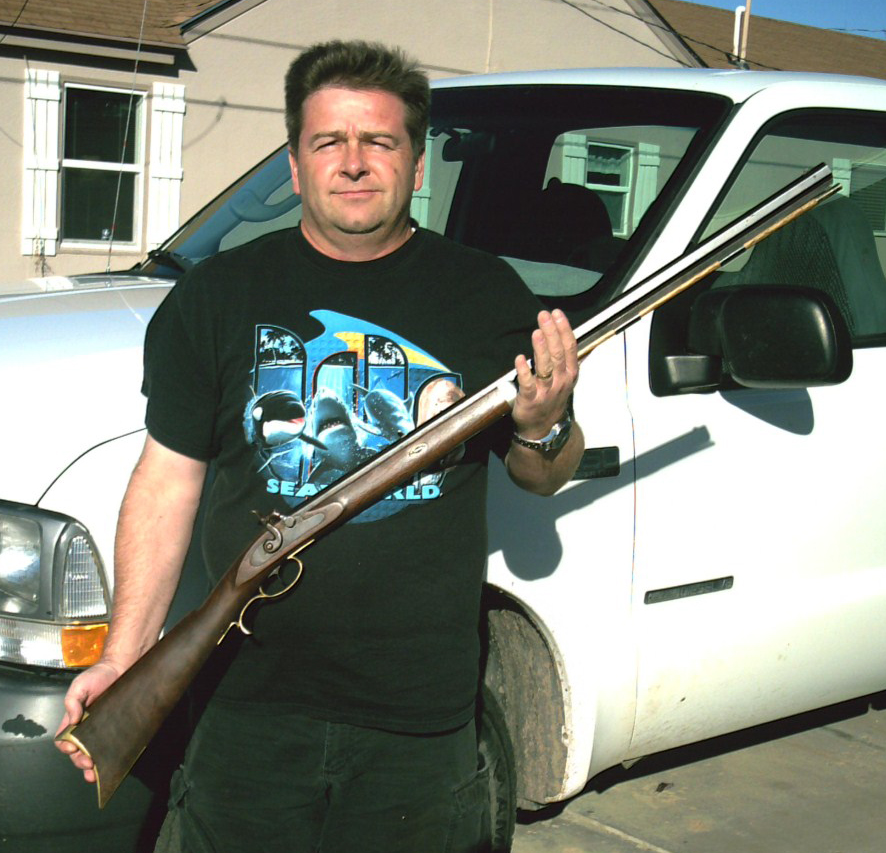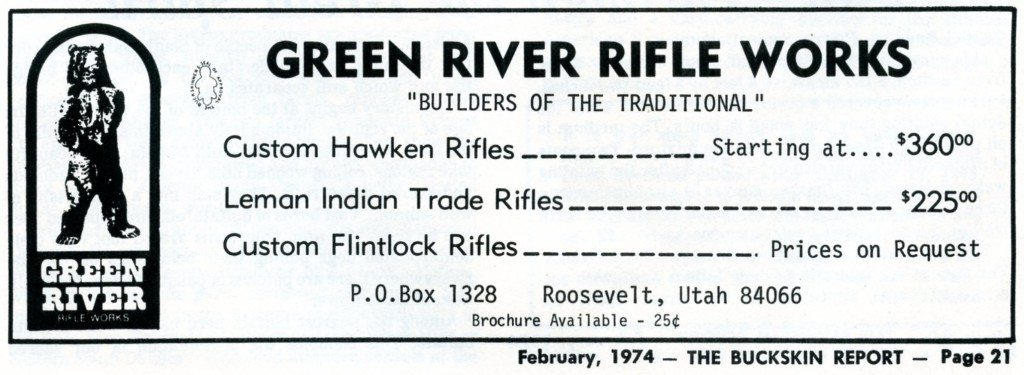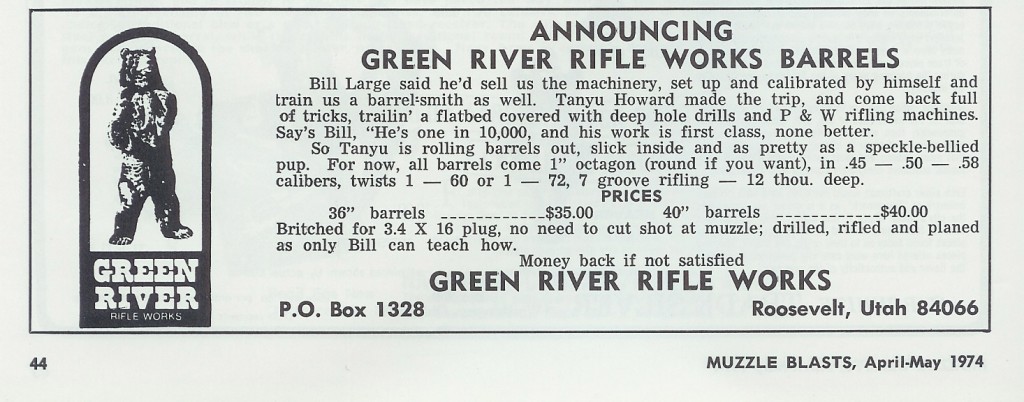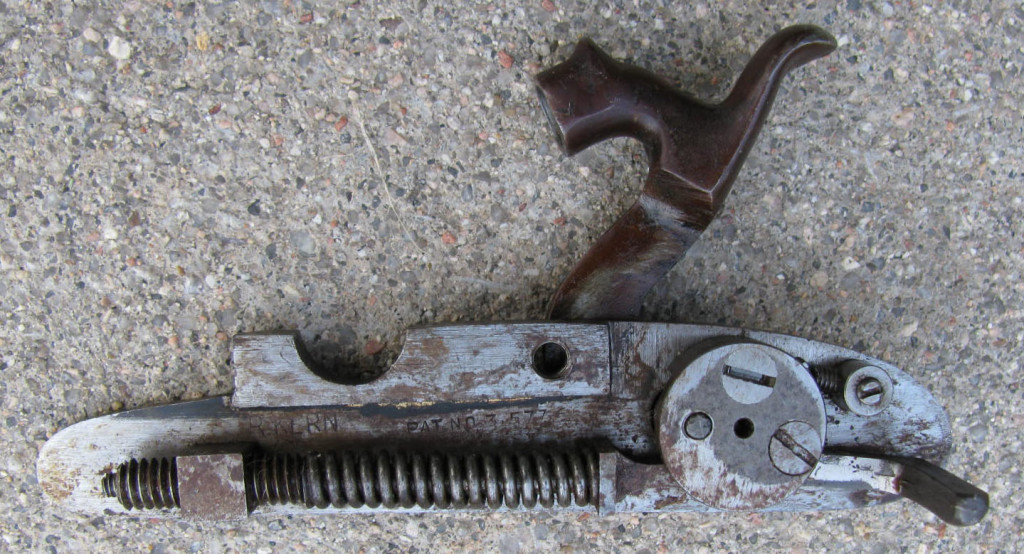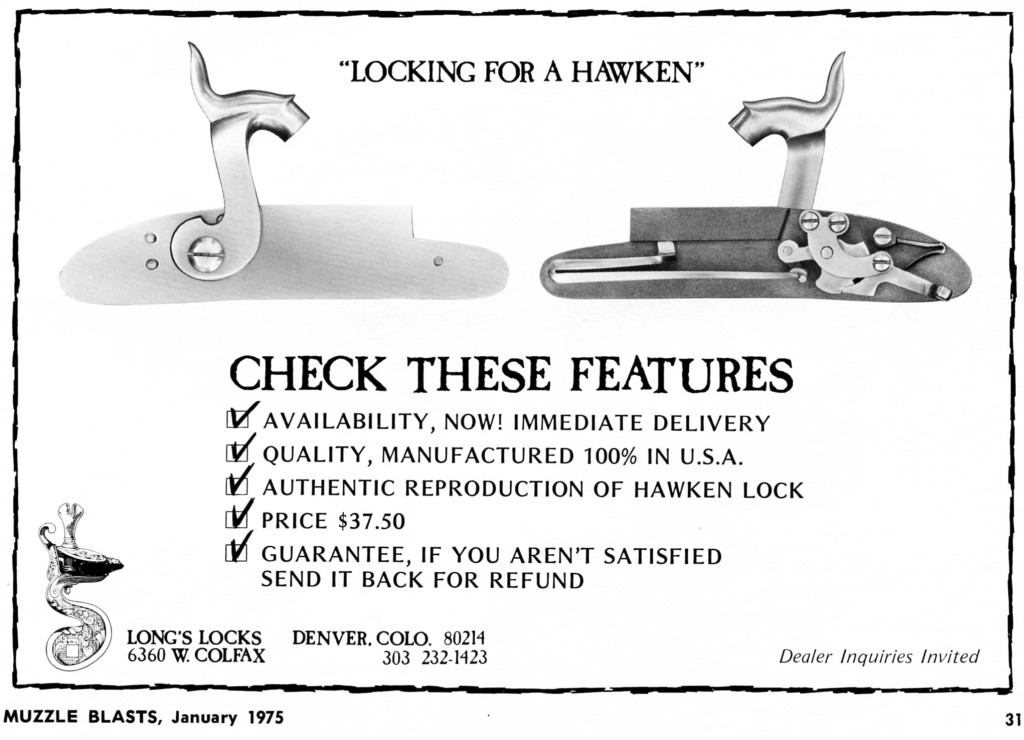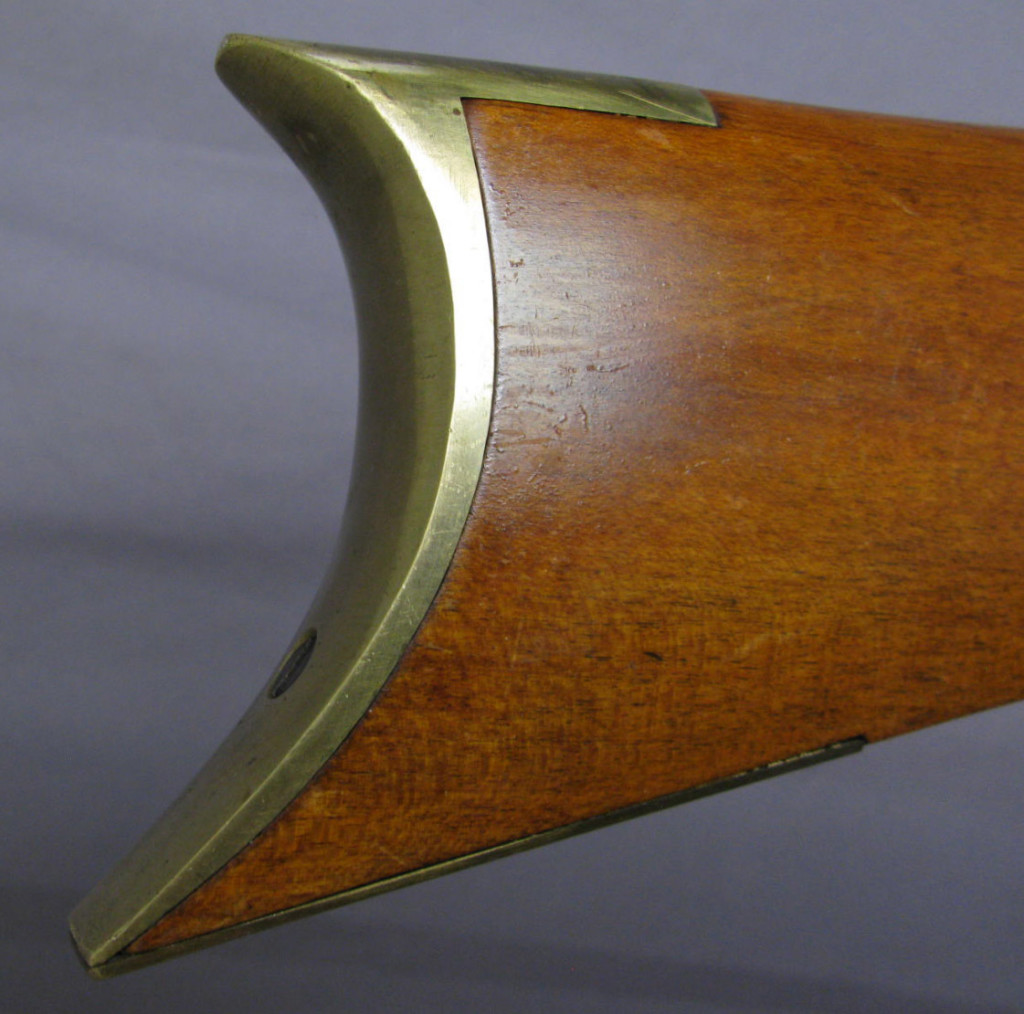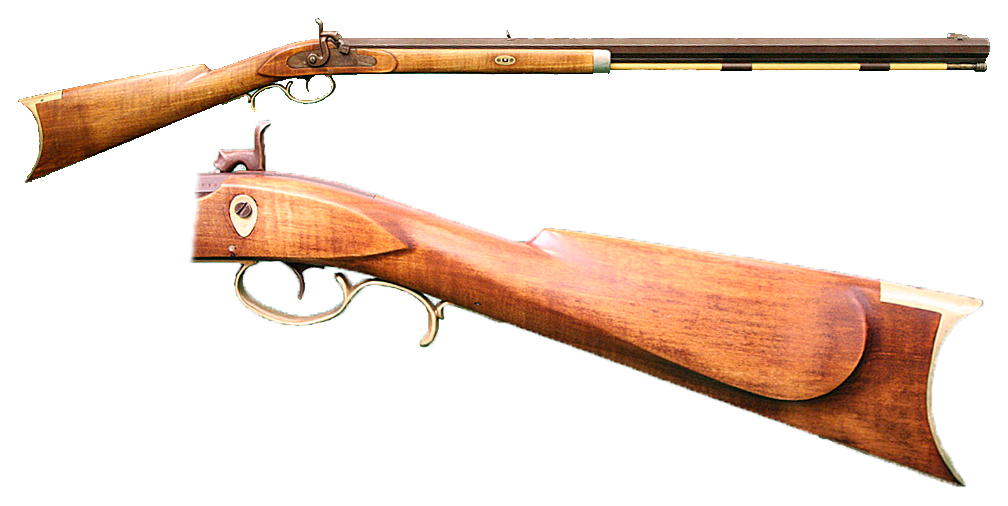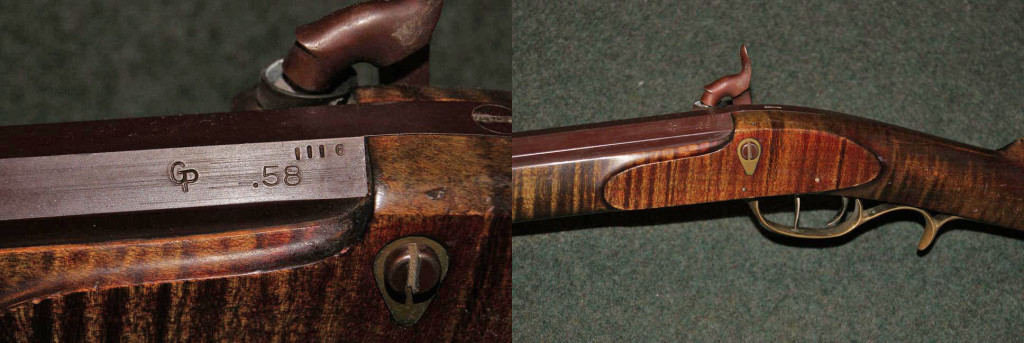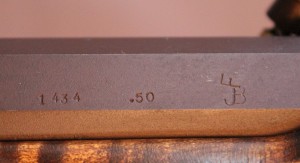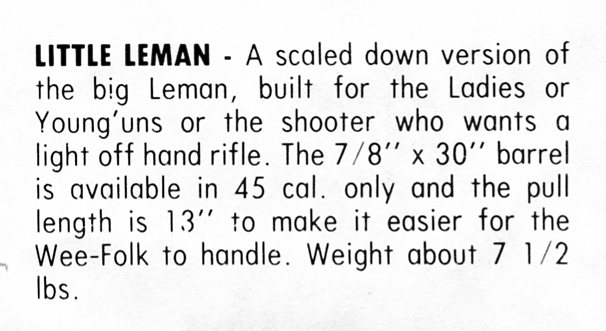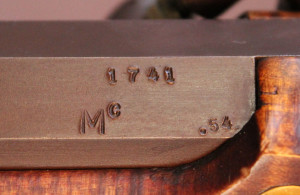Henry E. Leman of Lancaster, Pennsylvania was one of the most prolific rifle makers in the decades before the muzzleloader was made obsolete by breech-loading, cartridge guns. A large number of his rifles have survived ‘til modern times. His factory built all types of rifles, but he is probably best known for the trade rifles and trade guns he sold to the Bureau of Indian Affairs to be used as treaty annuity payments, gifts, and trade.
Prior to 1970, several firearm historians had written about him and his rifles, and most of them made reference to the popularity of his rifles with the plains Indians based on the large percentage of his rifles surrendered or captured during the Indian Wars. In The Plains Rifle, Charles E. Hanson, Jr. had stated that Leman “apparently sold some rifles to the Chouteaus prior to 1837 because he refers to such sales in letters of 1837 and 1839 to the American Fur Company in New York.” As a result, Leman’s rifles were solidly established as “Plains Rifles” and even had some association with the tail end of the Rocky Mountain Fur Trade. It was only natural for Doc White to begin his business with a replica Leman rifle.
Doc White says he had been thinking about starting a company to build muzzleloaders for a number of years. He wanted to produce a rifle that was suitable for hunting, target shooting, and rendezvous reenactment. He says he decided to build a style of rifle that was a composite of some original Leman rifles he had examined over the years. The desire was to produce an affordable rifle that had more authentic lines than the mass produced rifles available in the early 1970’s.
Doc made his first prototype Leman Trade Rifle in 1970.

This next photo shows Carl Walker’s son holding the second prototype built by Carl. It has a 1” x 33½” Douglas barrel in .50 caliber. The lock is a coil spring version by Bob Kern, and the rifle is stocked in walnut.
With two prototypes under their belt, Doc and Carl embarked on a new venture in the garage shop.
The first advertisement for Green River Rifle Works and their Leman Trade Rifle appeared in the July 1972 issue of Muzzle Blasts (see ad above). The production rifle was very similar to Carl Walker’s prototype. It had a Kern coil spring lock, a 1” diameter Douglas barrel, brass furniture, a maple stock, a single barrel key, and a poured pewter nose cap. The introductory price of $164.95 was a substantial discount off the regular price of $199.95. The rifle proved to be very competitive with the mass produced muzzleloaders available in the early 1970’s and was well received in the market. The price was increased from $199.95 to $225 in 1974.
GRRW had hoped to obtain all their component parts from established suppliers. Initially, this worked fine, but as demand for their rifles increased, it began to outstrip the availability of commercial parts. The most problematic component was the barrel. Initially, GRRW acquired barrels for the Leman Trade Rifle from Douglas Barrel Co. Within a couple years, GRRW was looking for another option. Bill Large offered to sell GRRW some of his surplus barrel making equipment and train a GRRW employee to use it and even help set the equipment up in the GRRW shop. By early 1974, GRRW was producing their own barrels.
Doc White had stated on his website that they had purchased 1,000 of Bob Kern’s locks and was glad when they used them up.
Because of its coil spring, the Kern lock was not viewed as a traditional lock and some heaped a fair amount of scorn on it. In spite of this, the Kern lock has some good points. It made very little noise when it was cocked and was popular with hunters. Its internals are a very innovative design that was patented by Kern. The main spring tension is fully adjustable to provide adequate force to ignite the percussion cap and minimize hammer blowback. The coil spring is more durable and reliable than the traditional v-shaped main spring. The sear engagement is also adjustable to increase or decrease the trigger pull. I’ve never heard of one of these locks failing. The picture below shows the internals of a Kern lock from a Leman Trade Rifle.
From what I’ve observed, and consistent with Doc’s comment about the number of Kern locks purchased, around serial number 1000, GRRW switched from using the Kern lock on the Leman Trade Rifle to using Ron Long’s Hawken lock. It appears that Ron Long began producing his Hawken locks and triggers late in 1974 or early 1975. The earliest advertisement I could find for Long’s Locks was in the January 1975 issue of Muzzle Blasts.
It seems logical to deduce that GRRW used up the last of the Kern locks and started using Long’s locks around the beginning of 1975. Long’s Hawken lock would continue to be the standard for the Leman Trade Rifle until Bud Siler introduced his Mountain lock, at which time GRRW started using it on Leman Trade Rifles. The use of the Siler Mountain lock may have been intermittent for some time depending of the availability of the locks and other components, namely the butt plate and trigger guard.
Examples of the commercially available butt plate and trigger guard that GRRW used on their Leman Trade Rifle are shown below.
The butt plate on this sample is about 4¼” high, 1.3” wide, and the comb is about 2.5” long. These dimensions will probably vary some from one rifle to another depending on the amount of filing and sanding the individual sand castings received. The trigger guard bow is 2½” long and ⅔” wide, overall trigger guard length is 7⅛”. The thickness of the rail varies but is generally over 0.2” except for the bow which was worked down to about 0.14” thick.
The butt plate and the trigger guard were obviously the best suited components that were commercially available at the time, but they look and feel bulky.
In 1974, Phil “Bluejacket” Sanders developed patterns and molds for a new set of butt plate and trigger guard for GRRW Leman rifles. These propriety castings would gradually replace the earlier commercial butt plate and trigger guard on the Leman Trade Rifles. The propriety butt plates and trigger guards may not have been in plentiful supply or were reserved for the Leman Indian Rifle because the older components are seen on Trade Rifles with serial numbers into the 1200’s. Certainly, by the early 1300’s serial numbers, the Bluejacket designed butt plate and trigger guard were standard on the Leman Trade Rifle.
The new propriety butt plate and trigger guard facilitated the building of a slimmer and sleeker rifle than the old commercial components. This is especially true when the Siler Mountain lock is used which is slightly smaller than Long’s Hawken lock.
GRRW was constantly plagued by supply problems of the component parts for various rifles, and this no doubt played a role in which parts were used on a Leman Trade Rifle at any one time. Another consideration concerning the use of locks is the diameter of the barrel ordered by the customer. The Siler Mountain lock is well suited for the Little Leman with its ⅞” barrel and the standard Leman Trade Rifle with its 1” barrel, but if the customer wanted a heavier 1¹/₁₆” or 1⅛”, then the larger Long’s lock would fit better.
Serial Number Range 101 – 1000
The first 900 or so (1972 through 1974) factory finished Leman Trade Rifles had a fairly standard set of components, namely the Kern coil spring lock, the heavier commercial butt plate and trigger guard, a 1” x 33” Douglas or GRRW barrel secured to the stock with one barrel key, a poured pewter nose cap that was shaped to the same contour as the forearm (essentially an extension of the forearm), and a beaver tail cheek piece.
Below is Leman Trade Rifle SN 466 which illustrates the typical rifle in this serial number range.
 SN 519 is also typical of the first 900 Leman Trade rifles built. The photo below shows the commercial furniture and the beaver tail cheek piece.
SN 519 is also typical of the first 900 Leman Trade rifles built. The photo below shows the commercial furniture and the beaver tail cheek piece.
Serial Number Range 1000 – 1300
From serial number 1000 to about 1300 (1975 to 1977), a transition of sorts occurred with a mix of component parts being used, resulting in some variation in the looks of the Trade Rifle. Long’s Hawken lock is generally found on rifles in this range. These Trade Rifles will most likely have the earlier commercial furniture or a mix of commercial and proprietary furniture. The shape of the pewter nose cap also begins to change.
Some of the GRRW Association members have shared pictures and information on their rifles in this serial number range.
Leman Trade Rifle SN 1058 was made with Long’s Hawken lock and commercial furniture. The rifle is .54 caliber with Bill McKay’s makers mark. Nose cap is cone shaped. The barrel is held in the stock by a key.
Leman Trade Rifle SN 1116 also has Long’s Hawken lock and commercial furniture. The trigger guard is not the guard normally used, though. Since this rifle has double set triggers, it’s likely that another commercial guard with a longer bow was utilized with modifications. The rifle has Gardell Powell’s makers mark.
Leman Trade Rifle SN 1273 wears Long’s Hawken lock and commercial butt plate. The trigger guard may be the propriety guard designed by BlueJacket, but the butt plate appears to be the old commercial version. The nose cap is coned shaped. The makers mark is Don McKee’s.
Serial Number Range 1300 – 1500
Around SN 1300 (late 1976 or early 1977), GRRW tended to standardize the Leman Trade Rifle with Bluejacket’s proprietary butt plate and trigger guard. We have a couple Leman Trade Rifles with SN 1323 and SN 1434 that have Long’s Hawken lock, but they have 1¹/₁₆” diameter barrels. It’s not clear if the larger Hawken lock was used because of the larger barrel size or if Long’s lock was predominate on Trade Rifles in the 1300’s and 1400’s serial number.
Leman Trade Rifle SN 1323 with Long’s Hawken lock and BlueJacket’s proprietary furniture. The barrel is 1¹/₁₆” x 33”, .54 caliber and carries Neill Field’s makers mark.
In the Vol 1, Issue 11 Green River Gazette, I made the statement, “I’ve not seen any factory Leman Indian Rifles with a cap-box, though there may be some out there.” This isn’t an Indian Rifle, but friend Bob had the Leman Trade Rifle shown below stored in the back of his safe. It definitely demonstrates that some Leman rifles left the GRRW shop with cap boxes installed.
The rifle above is SN 1434. It was built by Jim Boast and has a 1¹/₁₆” barrel, a Long lock, and the proprietary furniture.
GRRW didn’t advertise much in 1976 and 1977; probably because they were getting more orders than they could handle by word of mouth. Late 1978, they ran an ad stating, “the 1 in. barreled Leman kit now has a completely inletted stock.” By this time, they had standardize the use of Siler’s Mountain lock on the Leman Trade Rifle which allowed them to use special equipment and jigs to fully inlet the stocks and reduce the amount of labor involved in making these rifles.
Serial Number Range 1500 – 1800+
All the rifles we’ve examined in the serial number range of 1500 (mid-1978) and higher have a Siler Mountain lock, proprietary furniture, and a coned shaped pewter nose cap. The barrels are either pinned or keyed.
In spite of the changing components, the standard features of the Leman Trade Rifle as described in the GRRW catalogs did not change over the years. The standard barrel dimensions were 1” x 33” in four standard calibers, .45, .50, .54, and .58. The standard length of pull (LOP) was 14”. The rifle weighed about 9 lbs. Before 1976, a single barrel key was standard. Beginning in 1976, the catalog recommended that the barrel be pinned to the stock as a more traditional treatment, but a barrel key was offered as an option. The customer also had the option of ordering a different barrel size at no additional cost and some extra cost features such as fancy wood, double set triggers, and flint ignition.
Typical Leman Trade Rifle post 1977 and serial number above 1500.
The different barrel sizes are interesting. We’ve seen Trade Rifles with 1”, 1¹/16”, and 1⅛” diameter barrels. The rifle in the middle of the picture below has a 1⅛” barrel. The top and bottom rifles have 1” barrels. The rifle with the largest size barrel looks and feels significantly different than the other rifles. The top barrel, SN 1561, was made in August, 1978.
Leman Trade Rifle Variants
There were two other versions of the Leman Trade Rifle that were offered:
- a Squirrel Rifle was listed in the 1973 and 1974 catalog with a ⅞” x 30” barrel in .36 or .45 caliber and a 14” LOP, and
- the Little Leman, which was listed in the 1974 and all the later catalogs, was a scaled down version of the Trade Rifle. It was similar to the Squirrel Rifle, but with shorter LOP.
Picture and description of the Squirrel Rifle from a 1973 catalog.
Below is an example of a Leman Squirrel Rifle. The barrel is a ⅞” x 30” Douglas barrel in .45 caliber. The length of pull is 14 inches.
The description of the Little Leman from the 1976 catalog is shown below.
We don’t have photographs of a sample of the Little Leman, but it is essentially the same rifle as the Squirrel Rifle shown above except the LOP is an inch shorter.
The Numbers
The serial numbers for the Leman Trade Rifles began with 101. Below are pictures of Carl Walker (on the left) and Doc White (on the right) shooting #101.
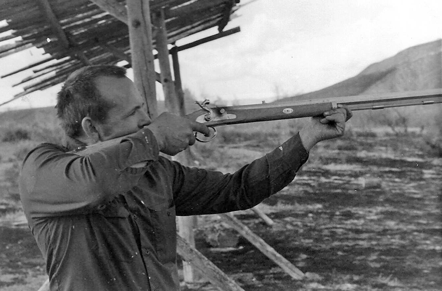

We’ve heard different figures for the total number of factory Leman Trade Rifles made—as high as 3,000, a guess of 2,000, and as low as 1,821. The highest serial number we personally know of is #1741 shown below. The figure of 1,821 is based on Carl Walker’s personal records and is likely the most accurate. The factory finished rifles and the semi-finished (in-the-white) rifles were serial numbered and included in these numbers. The basic kits were not numbered, and it is not known how many of these were sold.
The Leman Trade Rifle was by far the most popular gun GRRW made. Price no doubt had a lot to do with its popularity as the Trade Rifle was almost half the cost of a half stock Hawken. As in the Fur Trade and Robe Trade eras, the GRRW Trade Rifle was a utilitarian tool that fit a market niche, just as Doc had planned.



